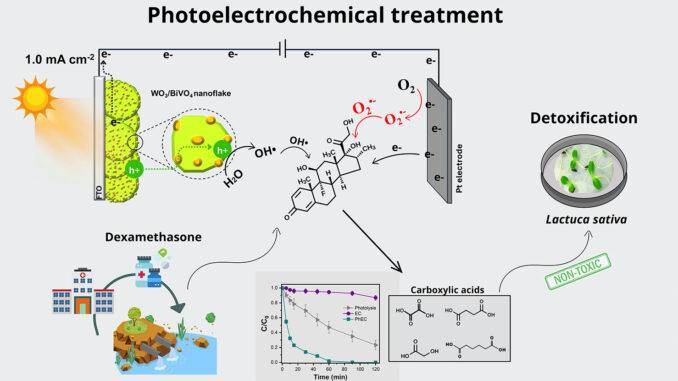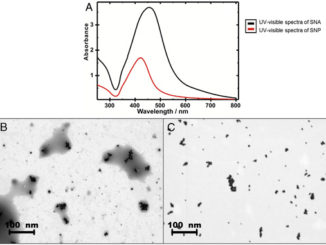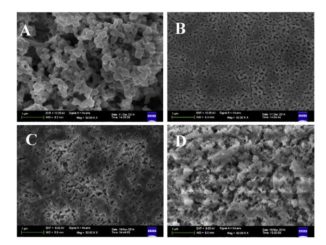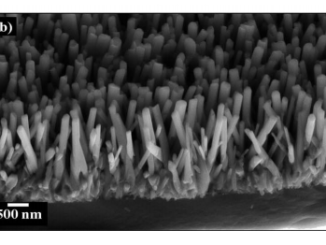
WO3/BiVO4 heterojunctions: Photoelectrochemical performance for dexamethasone degradation and toxicity assessment in Lactuca sativa
Abstract: Water contamination by dexamethasone (DEX) poses a significant threat to the global population. Developing an effective and affordable system for DEX removal remains a critical need, particularly in treating DEX and other contaminants at environmentally relevant concentrations. Chemical bath and spin coating techniques were applied to synthesize a custom-designed WO3/BiVO4 interface electrode on a fluorine-doped tin oxide (FTO) substrate. Each WO3/BiVO4, WO3, and BiVO4 layer was characterized both photochemically and electrochemically to identify enhanced light harvesting and electron transfer at the heterojunction. Compared to the pristine materials, more charge carriers, enhanced transfer, and separation of photogenerated pairs were observed. The effectiveness of the WO3/BiVO4 electrode in removing 10 mg L−1 DEX was evaluated under photolysis, electrocatalysis (EC), and photoelectrocatalysis (PhEC) treatment conditions. The PhEC treatment at 1 mA cm−2 under visible light irradiation exhibited an excellent DEX removal efficiency of 100 %, surpassing photocatalysis (54 %) and EC (14.6 %). The mineralization rate and the formation of short-chain acids (oxalic, succinic, glycolic, and adipic) depended on the processes investigated. The large formation of superoxide radicals from the photogenerated charges in WO3/BiVO4 was revealed by scavenger tests, elucidating the degradation mechanism in PhEC, which resulted in a final product with lower toxicity, proven by tests with Lactuca sativa. The application of reuse cycles and characterizations after the PhEC processes demonstrated the electrode’s good quality and useful life. Therefore, it can be inferred that the WO3/BiVO4 electrode applied in the PhEC process efficiently removes DEX and presents itself as a promising proposal for treating residual drugs in environmental matrices.
Author(s): Roberta Y.N. Reis, Isabelle M.D. Gonzaga, Roger Gonçalves, Carlos H.M. Fernandes, Marcelo Assis, Ernesto C. Pereira, Marcos R.V. Lanza, Lucia H. Mascaro
Electrochimica Acta
Published: 20 June 2025, Volume 526, 146195
DOI: https://doi.org/10.1016/j.electacta.2025.146195
CDMF
The CDMF, hosted at the Federal University of São Carlos (UFSCar), is one of the Research, Innovation and Dissemination Centers (RIDC) supported by the São Paulo State Research Support Foundation (Fapesp), and also receives investment from the National Council Scientific and Technological Development (CNPq), from the National Institute of Science and Technology of Materials in Nanotechnology (INCTMN).




